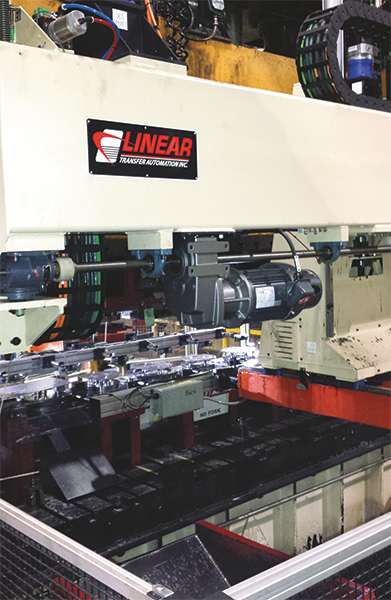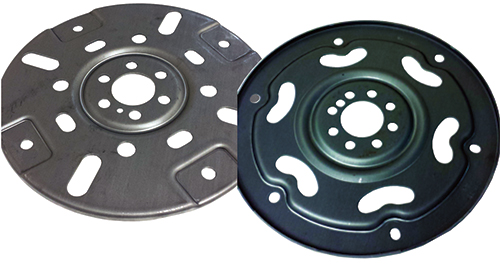Runout and Offsets Critical Quality Concerns
The press operator assumes quality-control responsibilities, including piece-part inspection performed every 30 min. In addition to the previously noted dimensional tolerances, Harant adds that runout and offset tolerances are critical.
Also a focal point, early in the process-development stage, was tool development. “Forming clearances required extra attention,” Harant says, “to obtain the specified part diameter within the tolerance specifications. We went through three or four recuts of the form blocks and form rings on the first of the 10 dies, and then applied what we learned to the remaining dies to quicken their development.”
Harant also notes that J2340 steel alloys (340XF and 550XF) are “difficult to stamp. Shear strength is particularly high.”
Form tools are coated by Oerlikon Balzers. “We use their Alcrona Pro, Lumena and X.Cell coatings,” Harant adds. Alcrona Pro, according to Oerlikon literature, is a “top-tier” AlCrN coating for punching and forming applications, and boasts a microhardness of 3200HV and a friction coefficient (dry) of 035. For extra hardness requirements, the Lumena TiAlN coating gets the call, rated to 3400 HV microhardness. X.Cell is at the lower end of the microhardness scale (2100 HV) with a friction coefficient of 0.5.
Keeler Weighs in on Forming the High-Strength Steels
I asked formability expert Stu Keeler (long-time contributor of MetalForming’s Science of Forming column) to share some thoughts on forming 340XF and 550XF steels. He says:
“Compared to the lower strength 340XF steel, the higher strength 550XF steel has the following characteristics:
• “As yield stress increases, the amount of elastic stresses in the atomic structure increases as the sheetmetal forms. This in turn increases the amount of springback, which is the release of the elastic stresses back to their natural position. The amount of springback is proportional to the yield strength (stress). Therefore, the 550XF steel will exhibit about 60-percent more springback in bend angle, sidewall curl, twist, global shape change, etc. Increased springback correction or compensation can be difficult to achieve.
• “Higher strength steel will require stronger tooling to resist deflection, wear, etc. Increased tooling downtime could occur.
• “Energy required to form the steel is the area under the true stress-strain curves. Higher-strength steel will require more energy to form the same amount of deformation. The press might be capable of withstanding the load but not the need for more energy.
• “The increased energy to form the stamping will raise the temperature of the material—not uniformly but a function of the amount of strain at each location. Temperature variation in the stamping can change the viscosity of the lubricant and coefficient of friction. Amounts of deformation (especially stretch) can change in different areas of the stamping to change springback and even cause galling and scoring.
• “Workhardening capability (n-value) decreases with increase in yield strength. The n-value decrease with increasing yield stress can be shown on a curve. Higher strength means less allowable stretchability, as shown by the reduction in the height of the forming-limit curve.
• “As yield strength increases total elongation decreases; this lessens the ability to bend the steel. Numerically, the ratio of punch radius to sheet thickness must increase as total elongation decreases, to avoid splits.” MFView Glossary of Metalforming Terms
See also: Linear Transfer Automation Inc.
Technologies: Pressroom Automation, Stamping Presses










 Video
Video